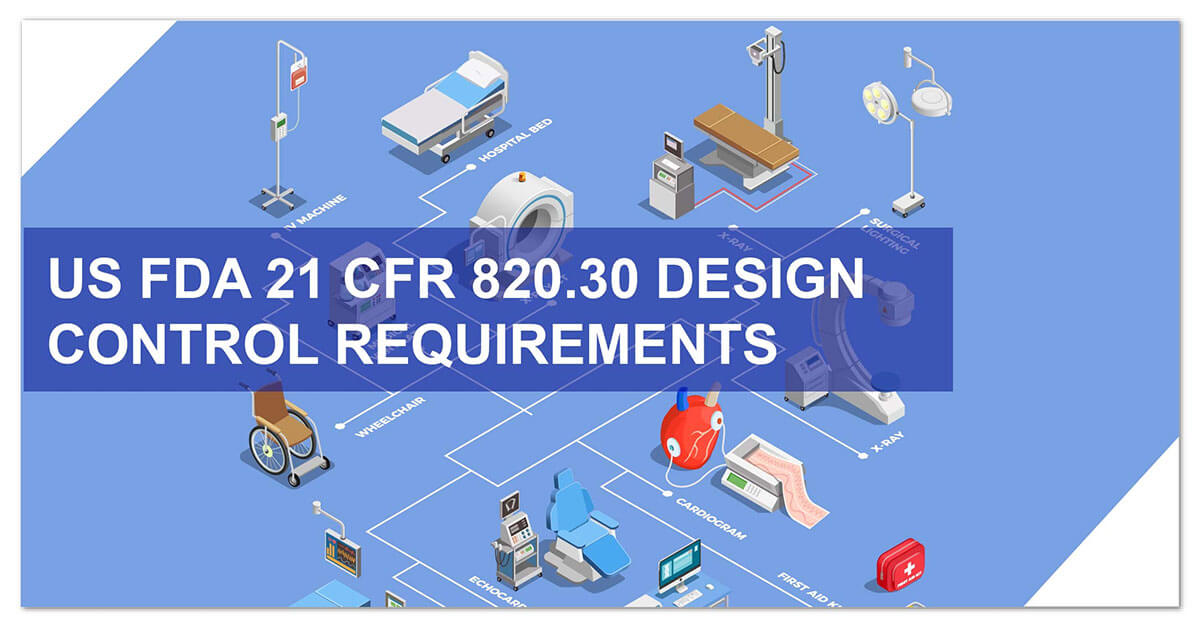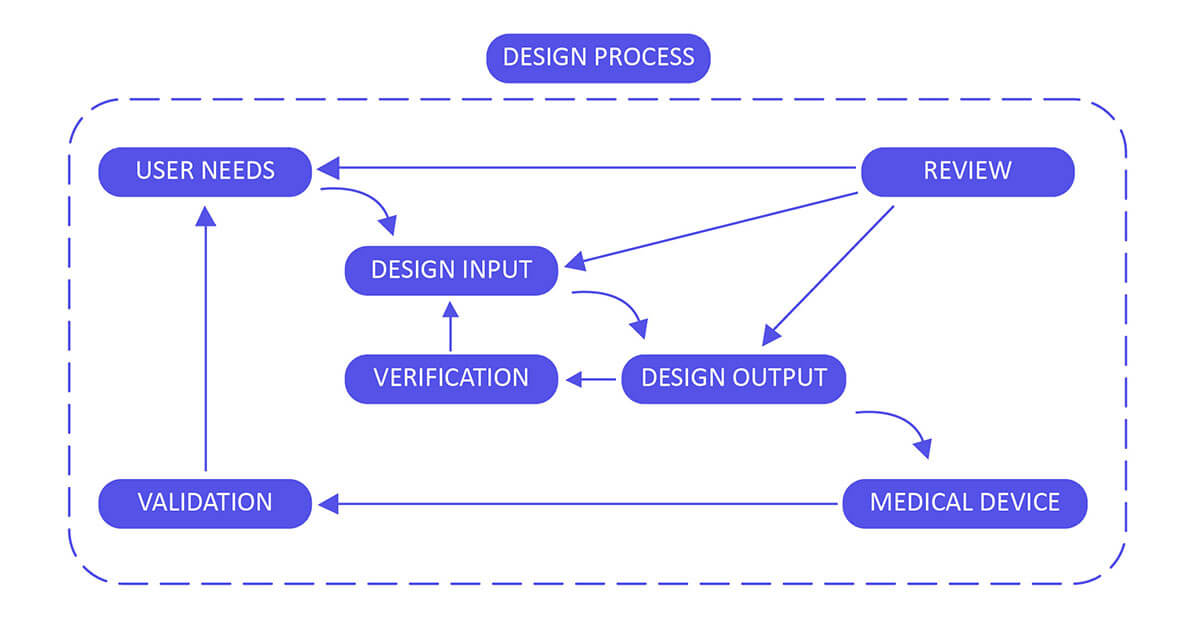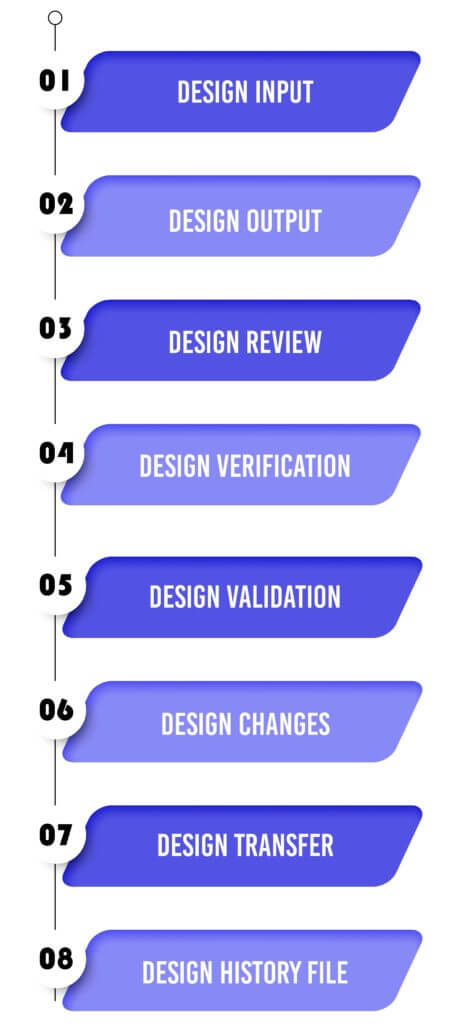US FDA 21 CFR 820.30 Design Control Requirements for Medical Devices
Navigate the complexities of design controls mandated by the FDA under 21 CFR 820.30, ensuring your medical devices meet regulatory requirements while maintaining quality and safety.
Overview of 21 CFR 820.30 Design Control Requirements
The FDA’s 21 CFR 820.30 regulation outlines the essential framework for design and development controls for medical devices. These controls are integral to ensuring that devices meet user needs, intended use, and applicable standards for safety and performance.
Medical device manufacturers must adhere to these requirements to maintain compliance throughout the product lifecycle, from initial planning to post-market use.

Let's Grow Your Business Together
Design Control 21 CFR 820.30 Process for Medical Devices :
Build up and maintain a plan that describes the design and development activities and allocates the individual obligations for each activity. Guarantee you review, update and approve the plan until the device design is completed, verified and validated.

Design Input :
Utilize performance, safety, business economics, outputs of risk management and regulatory requirements as a basis to plan the device with the goal that its motivation and the proposed utilize are clear. The input may also come from surveying your customers( For example, clinicians, nurses, patients).
Design Output :
Design output methods or particulars need to stipulate or refer to the design input document developed by the team and need to identify the critical measures/outputs for the best possible capacity of the device. These incorporate the tests and strategies that may have been produced, adjusted or used to show conformance with the characterized configuration inputs. Examples of design outputs may include:
- The device itself.
- The user manual.
- Specifications A Risk Analysis Study results (For examples, validation and biocompatibility studies, storage).
- Technical Files.
Design Review :
Confirm the design, or identify at an opportune time and right any insufficiencies distinguished at other plan and improvement phases. Two common types of review are hazard analysis, and failure mode and effect analysis.

Design Verification :
Confirm the device outline by means of examination and target prove, verify that the design outputs meet the plan inputs. Design verification activities must be arranged and routinely analyzed and the outcomes must be documented.
Design Validation :
Approve the device design plan by means of examination and target prove, affirm that the last outline yield reliably meets the particular planned utilize. Design validation should follow successful design verification. Since outline check is directed while the plan work is being performed, design validation confirms that the medical device meets its intended use. Generally, this is set up through in vitro execution, practical testing, creature testing and additionally in vivo clinical assessments and trials.
Design Changes :
Guarantee that all plan changes are distinguished, documented, approved, verified, reviewed and endorsed before usage.
Design Transfer :
Ensure that the design of the medical device can be correctly translated into production specifications (that is, advancing successfully from product development to manufacturing).
Design History File :
The design history file (DHF) aggregates confirm (that is, the history of the design) that demonstrates that the outline was created as per outline of design control― specifically, the design and development plan, or the outline change design.
Roll of Operon Strategist
Operon Strategist the leading medical device regulatory consultant providing consultation for 21 CFR 820.30 design control with extensive experience and the practical implementation of design controls regulation for developing new design control processes or for making improvements to existing processes. We also provide medical device consultation for India, Saudi Arabia, the USA, the UK, South Africa, Oman, Iran & Egypt. Feel free to contact us.
We provide assistance to medical device manufacturers of Costa Rica in design controls as per FDA and ISO 13485: 2016 that can be mapped to the process that works best for the organization and the product being developed. If you need any help in setting up a design control system or wish to modify an existing system to align with ISO 13485 or FDA design controls, feel free to contact us.
FAQ'S
What is 21 CFR 820.30?
It’s a section of the US FDA Quality System Regulation that outlines design control requirements for medical devices.
Why is 21 CFR 820.30 important?
It ensures devices are designed safely and effectively, meeting FDA requirements.
What are the main elements of design control?
Design planning, inputs, outputs, verification, validation, and design history file (DHF).
Do Costa Rican manufacturers need to follow 21 CFR 820.30?
Yes, if they plan to market their devices in the U.S.
How does Operon Strategist assist with 21 CFR 820.30?
We guide manufacturers in creating compliant documentation and processes for FDA submission.
